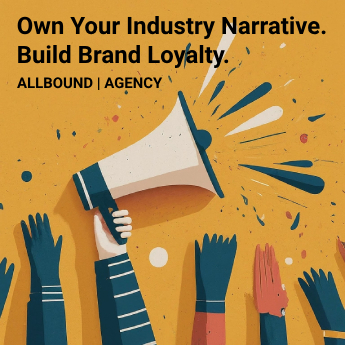In the evolving landscape of marketing, it’s evident that brands need to utilize diverse strategies to reach and engage their audiences effectively. Among the myriad of techniques available, the combination of educational web content and magazine ads offers a unique blend of inbound and outbound marketing, making it an excellent strategy for savvy marketers. This blend provides an impetus to not only draw prospects through valuable content but also to present your offerings to them through targeted advertising. Intrigued? Let’s explore this further.
Why should you be combining educational web content and magazine ads?
Well, this dual-pronged approach capitalizes on the strengths of both digital content and traditional print media. It creates a synergistic effect, offering an actionable strategy that can capture the attention of your target audience and lead them along the conversion funnel. So, join us on this journey into the converged world of print and digital advertising.
The Growth of Digital Marketing in the Information Age
The information age has seen an exponential increase in digital marketing strategies. In this context, educational web content comprises targeted digital content meant to inform, guide, and engage your online audience. This strategy focuses essentially on providing value, with the underlying intention to attract, engage, and retain an audience.
While digital marketing has grown by leaps and bounds, it is essential not to underestimate the power of traditional marketing channels like magazine advertising. Magazine ads, largely considered a format of outbound marketing, serve a different purpose. For more information on the nuances of inbound and outbound marketing, feel free to refer to our comprehensive guides on Inbound Marketing and Outbound Marketing
Understanding Educational Web Content
In the realms of digital marketing, educational web content is a powerful means to draw, engage, and retain your audience.
Definition and Importance of Educational Web Content
Educational web content can be defined as online content that provides valuable insights, knowledge, or skills to its readers. It includes blog posts, articles, e-books, white papers, infographics, webinars, online courses, and even videos with an educational angle.
Education-based marketing is potent because it positions your brand as an authority and trustworthy source of information in your industry. It serves a dual function – attracting potential customers by providing value and subtly promoting the brand’s offerings as solutions.
How to Develop Relevant and Enticing Educational Web Content
The development of educational web content begins with understanding your audience. Once you’ve identified their needs, you’ll want to create content that addresses those needs while providing actionable insights and solutions. Here are some strategies:
- Study your audience: Understand who your audience is and what they are interested in. Use surveys, reviews, and even social media to gain insight.
- Identify relevant topics: Find topics that resonate with your audience and are related to your industry.
- Provide value: Make sure your content is rich with actionable insights, practical advice, or unique information.
- Make it engaging: Use different formats and media, include relevant examples, and employ a friendly yet authoritative tone.
Different Forms and Formats of Educational Web Content
There are various forms and formats of educational web content you can create and leverage. For instance:
- Blog Posts: Blog posts are ideal for exploring various topics in depth, providing solutions, sharing expertise, and displaying thought leadership.
- Ebooks and White Papers: These formats allow you to delve deeper into specific subjects, thereby attracting leads and bolstering your brand’s credibility.
- Infographics: Infographics present complex concepts in an engaging and visually pleasing manner. They are easy to share, making them great for boosting your brand’s online presence.
- Webinars and Online Courses: Educational webinars and online courses provide an opportunity to deliver in-depth knowledge to your consumers.
The Art of Crafting Effective Magazine Ads
While educational web content engages your audience in the digital sphere, magazine advertising reaches out to them in the physical world. Let’s take a look at what makes magazine advertising uniquely potent.
Basics of Magazine Advertising
Magazine advertising involves placing ads in print magazines to reach a specific audience. Magazine ads are generally visually appealing and informative, and they offer advertisers an opportunity to ‘touch and feel’ their audience, quite literally.
A beautiful aspect of magazine ads is that they provide an immersive and uninterrupted reading experience. Unlike digital ads, which can sometimes feel intrusive, magazine ads naturally become a part of the reading experience.
Know Your Audience – Crafting Ads for Specific Consumer Groups
Crafting effective magazine ads starts with knowing your audience, much like creating educational web content. You need to understand who reads the magazine, their interests, and what they expect from it.
Targeting the right magazine itself could be half the battle won. For example, if you sell gardening tools, placing your ad in a gardening magazine would potentially have a higher impact than placing it in a general lifestyle magazine.
Innovative Ideas to Make Your Magazine Ad Stand Out
In an age where digital noise is abundant, innovative magazine ads can truly stand out and make a lasting impression.
- Integrate digital elements: Include QR codes, augmented reality features, or web links in your print ad to create an interactive experience that bridges the physical-digital divide.
- Use compelling visuals: Stunning photos, original illustrations, and eye-catching colors can make your magazine ad visually unforgettable.
- Tell a story: Instead of just selling a product, tell a story. Ads that tell compelling or emotional stories tend to stay with readers for longer.
Capitalizing on the Tangible Aspect of Magazine Ads
One of the unique benefits of magazine advertising is tangibility. Since magazines are a physical medium, readers can touch and feel the ads, likely spending more time interacting with them. Longer interaction times lead to better brand recall and higher chances of making a purchase.
Now that we understand the essence of both educational web content and magazine ads let’s see how they can be combined effectively for a converged marketing strategy.
Strategies for Combining Educational Web Content and Magazine Ads
Combining print and digital advertising does not mean simply repurposing magazine ads into digital content or vice versa. It involves carefully intertwining both strategies to provide a seamless user experience across the mediums.

Transitioning Seamlessly from Print to Digital: Including Web Links in Your Magazine Ads
One of the most straightforward ways to marry magazine ads with educational web content is by including web links or QR codes in your magazine ads. These links can lead to a piece of educational web content, such as a blog post, white paper, or online course.
Showcasing Customer Stories and Case Studies in Magazine Ads and Accompanying Digital Content
Another strategy involves showcasing customer stories and case studies in your magazine ads and expanding on them in your digital content. For example, an ad could feature a brief customer testimonial, with a link leading to a detailed case study on your website.
Using Magazine Ads to Promote Webinars, Online Courses, and Other Digital Educational Content
Magazine ads can also be used to promote webinars, online courses, and other digital educational content. The ad can serve as a teaser, generating interest and curiosity among readers, thereby compelling them to visit the website and engage with the full content.
Augmented Reality Enabled Magazine Ads Leading to Educational Web Content
Incorporating augmented reality into your magazine ads adds an interactive digital layer to your print content, creating a unique experience for the reader. AR can be utilized to direct readers to specific web content or provide previews of the available digital content.
Real-world Examples of Successful Combinations of Educational Web Content and Magazine Ads
The combination of educational web content and magazine advertising has proven successful for a variety of brands. Here are a few cases demonstrating effective utilization:
Case study 1: Brand X’s Integrated Marketing Campaign
Brand X masterfully combined print and digital marketing by placing QR codes in their magazine ads. Readers could scan the codes with their smartphones, leading them to a blog piece related to the advertisement, fostering further engagement.
Case study 2: Brand Y’s Educational Online Course Promoted Through Magazine Ads
Brand Y promoted their educational online course through magazine ads in an industry-specific print magazine. The ad featured a brief overview of the course and a web link, leading to more information online.
Case study 3: Brand Z’s Consumer Engagement Through Augmented Reality Magazine Ads
Brand Z experimented with augmented reality in its magazine ads. Readers could scan the AR code to access interactive digital content, promoting further exploration of the brand’s educational web content.
Tips and Best Practices for Merging Educational Web Content and Magazine Ads
Here are some tips to help you combine educational web content and magazine ads efficiently:
Consider Your Target Audience’s Preferences and Reading Habits
Understanding your audience’s preferences and reading habits is essential in crafting both engaging web content and impactful magazine ads.
Balance the Informational and Promotional Content
Ensure a proper balance between informational and promotional content. A heavy promotional tone might turn away some readers, while a heavily informational tone could underplay the brand’s product or service offerings.
Align Your Print and Digital Marketing Strategies
Your print and digital marketing strategies should align and support each other. This includes maintaining consistent brand style, messaging, and purpose across all mediums.
Employ Modern Technologies for Enhanced User Experience
Modern technologies like QR Codes, augmented reality, and mobile optimization can greatly enhance the user experience, engage readers, and bridge the gap between print and the digital world.
Overcoming Challenges in Integrating Educational Web Content and Magazine Ads
While merging educational web content with magazine ads provides unique opportunities, it also presents certain challenges.
Navigating the Digital Divide and Generational Preferences
Different generations have varying preferences for print versus digital media. You may need to make strategic adjustments based on your primary target demographic.
Managing Costs and Measuring ROI
Tracking the ROI of combined marketing strategies can be a challenge. Also, the cost of developing, implementing, and managing integrated strategies could be substantial. Appropriate budgeting and resource management is vital.
Staying Up-to-date with Evolving Marketing Trends
Like all areas of marketing, trends change and keeping up with what works and what doesn’t in the merging of these mediums is essential. Regular research, training, and staying informed about the latest trends in both digital and print marketing are vital.
Conclusion
Combining educational web content with magazine advertising provides an unparalleled platform to connect with your audience on multiple fronts, amplify your brand’s messaging, and facilitate a smooth customer journey. It combines the tangibility and impact of magazine ads with the granularity and depth of educational web content. As innovation shapes the marketing landscape, we look forward to more convergence of traditional print media and digital content at an even more granular level.
Perhaps in the future, we’ll see more VR-enhanced magazines directly leading to immersive web content or even a deeper integration of AI in curating personalized journeys for readers across magazine ads and educational web content. Till then, let’s continue to make the most of the strategies available to us.

